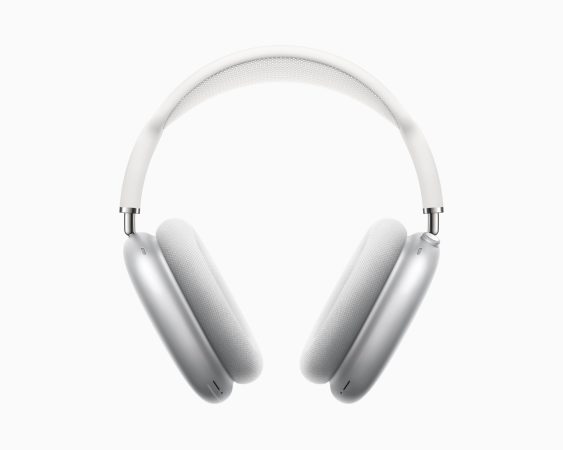

We may earn revenue from the products available on this page and participate in affiliate programs. Learn more ›
Can a single headphone contain multitudes? Can one piece of audio equipment be something to everyone and everything to more than a few? That seems to be the goal Sony set out to reach when, in August 2020, they released the sensor- and software-stuffed WH-1000XM4 noise-canceling headphones, an update to 2018’s WH-1000XM3. But, with a look nearly indistinguishable from the previous Sony wireless headphones, did the company just deliver a WH-1000XM3.5 and ’phone it in? With a surge of competition in the active noise-cancelling headphones market, does the Sony WH-1000XM4 still cut through the static? Sony set out to make headphones that you won’t want or need to take off and the company mostly succeeded. Let’s take a closer look at a headphone that packs a lot behind its unassuming facade.
The Sony WH-1000XM4’s design
Clean Looks, Clear Sound
The 1000XM4’s vibe can best be described as “functional.” A mix of plastic and pleather available in matte black, blue midnight, or a very (to me) beige-like silver, the Sony WH-1000XM4 is visually muted. The only bling is copper accents for the logo and around external microphone ports, which seriously could pass for USB-C sockets.
At first glance, the headphones can’t match the cybernetic industrial design of the Apple AirPods Max, the opulent but not ostentatious language of the Bang & Olufsen Beoplay HX, or the sleek, C-suite minimalism of the Bose Headphones 700. The 1000XM4’s looks alone certainly don’t justify the $349 price tag of these Sony headphones, which are already a “deal” compared to the prices of several rival flagships. Luckily, the best wireless headphones don’t live or die on aesthetics.
One bonus of this low-key build is that the Sony WH-1000XM4 is light—8.96 ounces, a pittance compared to the AirPods Max’s 13.6 ounces. The weight, combined with foam earcups and a spongy headband that are slightly expanded from the 1000XM3, make the 1000XM4 one of the most comfortable wireless headphones for long-haul listening that I’ve encountered. The 1000XM4 doesn’t have excessive clamping force but if your ears do need a breather, the cups swivel 180 degrees so the headphones sit comfortably around your neck.
Nailing home the utilitarian vibe, the 1000XM4 folds to fit a stiff, low-profile carrying case. It’s a sturdy, nondescript oval that’s good for headphones made to travel. In this case are a comically short USB-A to USB-C charging cable (you have to supply your own AC adaptor), a 3.5mm headphone cable (which works with noise cancellation or even without power), and a two-prong airplane adapter.
Good to on-the-go
The WH1000XM4 claims a battery life of 30 hours with tech turned on, closer to 38 with ANC and such off, and you can get up to five hours worth of charge in just 10 minutes using a 1.5A or higher AC adapter. While I didn’t stretch my use to the extremes, I had the WH-1000XM4 on and off over several long workdays before I plugged them in for the night, just in case. I never found myself worrying before key meetings whether or not I’d charged the headphones. Sadly, I didn’t feel as secure with the AirPods Max, which I always seemed to drain at an inopportune midday point. A selectable proximity sensor inside the 1000XM4’s left cup helps conserve battery—and your place in a song or podcast, etc.—by pausing whatever’s playing when it determines the headphones are off, starting it again when they’re back on.
Keeping you in touch
While there are slight ergonomic tweaks versus the 1000XM3, Sony’s main pitch for upgrading to the 1000XM4 is microphone quality. There are five mics—one in each oval vent on the earcups, plus three at the bottom of the left earcup—plus new firmware to improve call quality and noise cancellation. And, across multiple video chats, I had zero issues with anyone picking up my voice, though they sometimes heard faint family conversations and significant other office hours—the usual WFH challenges—in the background. Maybe the “Precise Voice Pickup Technology” isn’t perfect, but when I gave voice assistant commands or recorded myself I was more than satisfied with the results. I felt the recordings showed a little more of the highs than lows in my voice, but the results weren’t overly artificial or off-putting.
Taking or making calls and controlling your music is all done with taps and swipes on the touch-sensitive right earcup. Activating Google Assistant or Amazon Alexa is done with one of the two physical buttons on the lower left (the other one being power/pairing). The “Custom Button” can also be assigned to cycle through noise-cancelling/ambient sound (more on that later).
The other “big” upgrade is multipoint, allowing you to pair two devices simultaneously. Sony really doesn’t want you to take these headphones off. Using the Sony | Headphones Connect smartphone app, you can swap between devices without having to mess with settings on the devices themselves. And, for the most part, it worked without hiccups. You may experience some volume discrepancies switching between, say, an iPhone and a digital audio player. So don’t load up your most aggro playlist until you’ve tested your levels with something quieter.
Setting up the Sony WH-1000XM4

If you’ve ever paired Bluetooth gear with your smartphone, you won’t find any surprises with the WH-1000XM4: push a button, watch a blue LED blink, select the headphones in your device’s preferences. You can also go through the Sony | Headphones Connect app (available for iOS and Android) to first establish a connection. Alternately, devices that support one-touch near-field connections (NFC) only require a tap on the headset, and Google Fast Pair is also supported for quick proximity pairing with Android devices.
That’s where effortless ends. Open Sony’s app and an avalanche of options bear down on you. The first tab is just Status: battery level, Bluetooth codec used, whether you’re using Adaptive Sound Control, and what devices are connected. Adaptive Sound Control uses your activities to automatically adjust settings, activating noise cancellation or letting in more ambient sound based on location. Personally, I don’t like allowing any more tracking than I have to, so I kept it off, but if you regularly run through crowded streets and don’t want to have to toggle modes manually, it might be handy.
The next tab, Sound, is where the deep dive really starts. You can set your level of noise cancellation and run a quick optimizer that measures tones to tailor levels to how you wear your headphones. The app recommends running this anytime you change your haircut, hat, etc. It also calculates atmospheric pressure, but I haven’t flown since pre-pandemic times, so I can’t say how much of a difference that makes.
Another option is activating Speak to Chat, which pauses the music anytime you speak then resumes it 15 seconds after you’ve last spoken. It assumes that means you’re starting a conversation, but if you’re like me and mutter ideas to yourself and spontaneously to dogs, this feature is extremely disruptive. I quickly got tired of double-tapping the right earcup to restart a song, so I turned this off.
Another option when someone wants to talk to you is to cover the entire surface of the right ear cup with your palm, which lowers the music’s volume and pipes in external sound. But you have to hold your hand there the entire conversation, which actually makes you look like you’re having a harder time hearing.
Next up is equalization, which offers presets and a couple of custom slots. This is where bassheads can go to town, with up to 10 levels of boost (or cut) beyond the five-band EQ. Then there’s 360 Reality Audio Setup, which lets you connect and optimize apps that support Sony’s take on the digitally generated immersive audio trend recently given a higher profile thanks to Apple’s Spatial Audio launch. A walkthrough assists you in taking pictures of your ears (no, really), then shares information with supported music services including 360 by Deezer, nugs.net, and TIDAL.
Finally, you can decide whether to engage DSEE Extreme, an upscaling algorithm that uses AI to “restore the high-range sound” to digital music files, according to Sony. However, it was normalizing in a way that left me cold, emphasizing vocals at the expense of instrumentation. Hooray for the off switch.
But how does it sound?

There’s a lot of technology that could get in the way of the 1000XM4’s actual tone, but I’m happy to report for the most part it doesn’t. It actually helps, as long as you don’t engage DSEE Extreme. Packing 40mm drivers and a frequency response of 20Hz to 20,000kHz (over Bluetooth, or 4Hz to 40,000kHz when using the cable), the 1000XM4 can put the fun in functional. And if you dig in the equalizer to scoop a fair amount of bass, liberally push the upper midrange, and gingerly tuck the treble, it’s even relatively balanced, though you won’t mistake these for audiophile headphones.
On “Kindred” by Burial, a vital piece of metallic dubstep, each blown-out bass drop kicks up a cloud of clattering ash that swirls around like you’re inside a murky snow globe. On the opposite end of heavy, “CAFO” by progressive death metal band Animals As Leaders strafes the 1000XM4 with mathematical aggression, and the headphones convey each arpeggio and harmony interlude with authority. Because these are tuned for mobile use, there is a slight bump on the low end to help combat the rumble of travel. The bass can edge on boomy at times, but I never found the 1000XM4 overly muddy; it hits hard without fraying and doesn’t encroach on the revealing mids and highs’ room to breathe. The soundstage isn’t naturally wide, but it can go deep. And if you do think it’s a bit much, or not enough, the app lets you choose what to enhance.
Helping present this punchy, appropriately bright response is a smattering of Bluetooth 5.0 codecs, including universal SBC, AAC (for iPhone users), and LDAC (for Android devices and compatible digital audio players). That last one, Sony’s proprietary format LDAC, offers an audible uptick in audio quality, streaming at bitrates between 600kbps and 990kbps instead of the 256kpbs max of AAC. However, the downsides are making sure you have a suitable device and high-resolution music files (or streaming service), having to keep your device much closer to the headphones to avoid dropouts, and you can’t use multipoint and LDAC simultaneously. Also, because it’s pushing LDAC, Sony has left out the aptX codec, which offers both higher bitrates and more consistent connections. VHS or Beta. HD DVD or Blu-ray. Love those format wars.
Shouting the quiet’s praises
My first impressions, with active noise-cancelling turned off, weren’t great without EQ. But if you buy the 1000XM4, you’re here for the ANC and I’m happy to say that digital signal processing doesn’t have a negative effect on tonality or comfort. Quite the opposite. The ANC’s DSP actually tightens up the sloppier tendencies of the headphones.
The 1000XM4 uses Sony’s QN1 processor and a new Bluetooth system-on-a-chip, which the company says analyzes what you hear and what you want to disappear over 700 times a second. And the end result is impressive. I successfully tuned out my family watching a loud TV as I wrote in the same room, cut out the mechanical murmurs of a long drive, and even wore the 1000XM4 to help steady my nerves while I got a temporary crown (I love my dentist, but I hate the dentist). While I couldn’t avoid the sound of drilling resonating in my head, I couldn’t hear anything else so relied on hand puppet-like gestures to know when to open and close my mouth. Sweet mercies. And for all the bass the 1000XM4 can add to songs, that’s also the range where ANC has most improved what it takes out. Environmental hum disappears at a higher ratio than in the 1000XM3. Whether you’re working from a coffee shop or a cubicle, the 1000XM4’s ANC will reinforce your concentration. This is the same proven technology that trickled down to the recently released WF-1000XM4 earbuds (read our full review here).
The rest of the specs
While Sony bolstered its headphone’s usability in crowded, clamorous places, you don’t want to use the 1000XM4 in the rain or during a vigorous workout, as there is no IP rating so they’re not splash- or sweat-resistant. But as long as all you’re sweating is getting paperwork done without distractions, you’re good. And if that lengthy battery life does happen to run out without a handy plug nearby (or you just want to conserve power), the 1000XM4 can go old-school, wired with a standard 3.5mm headphone cable.
So, who should buy the Sony WH-1000XM4 headphones?
If you have the WH-1000XM3, the Sony WH-1000XM4 does everything it does but refined. It might not be a necessary upgrade, but there’s little chance of disappointment. For anyone not already a Sony noise-cancelling headphones convert, brand loyalty could play an oversized role in whether you consider the stylistically bland but technologically vivid WH-1000XM4. If you’re an Apple acolyte and don’t mind the less far less travel-friendly nature of the AirPods Max, you’ll probably go for that visually and sonically impressive set, which still has unrealized potential to be tapped by features in the upcoming iOS 15. If you’ve always bought Bose, there’s still plenty to be said for the company that pretty much popularized active noise cancellation in personal audio and continues that strong tradition in the sleek 700 Headphones. But if you’re in search of a bubble of portable productivity, the top-tier noise cancellation of these Sony Bluetooth headphones is a commuter’s dream and the tuning will appeal to the masses, the multitudes.
























